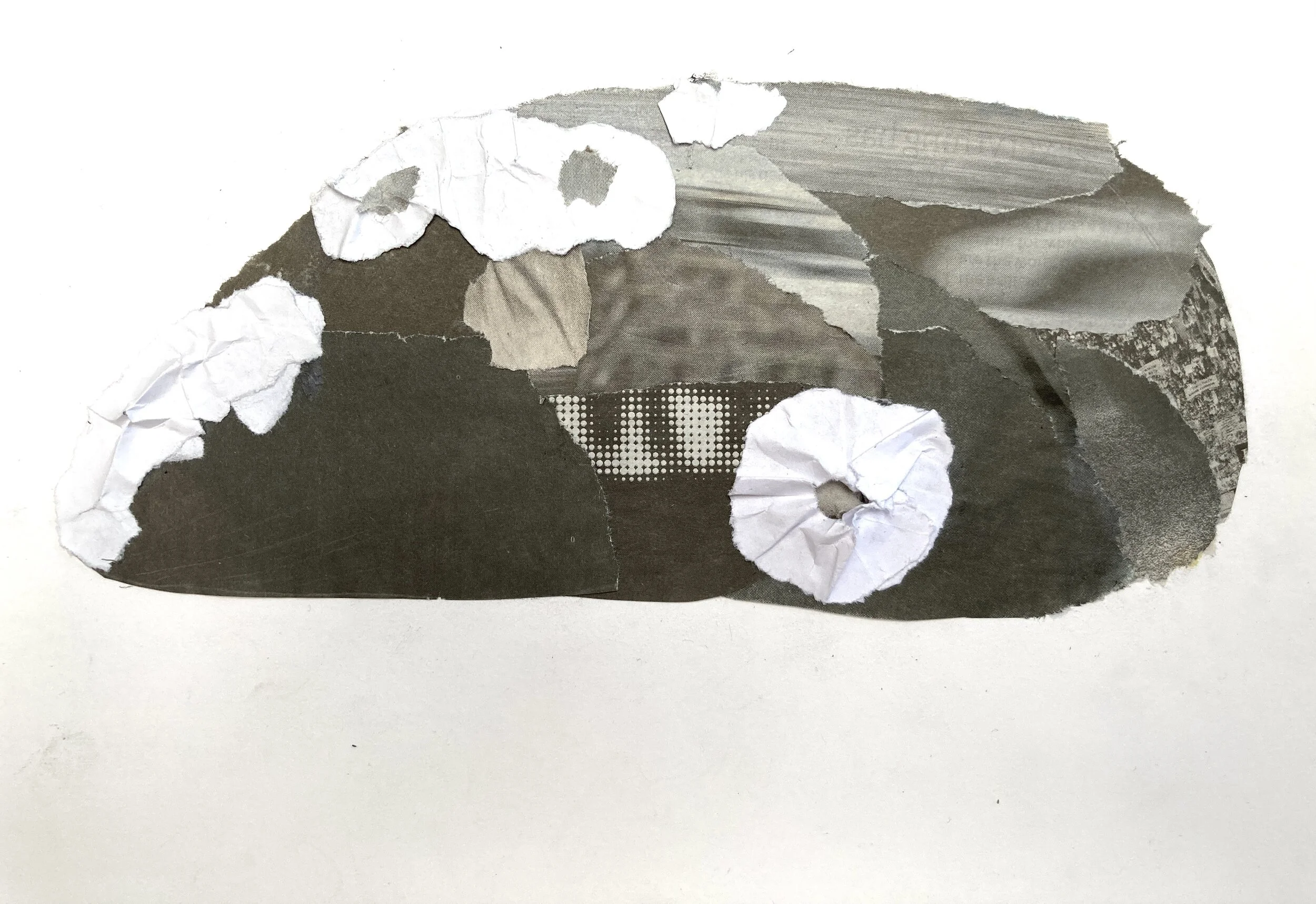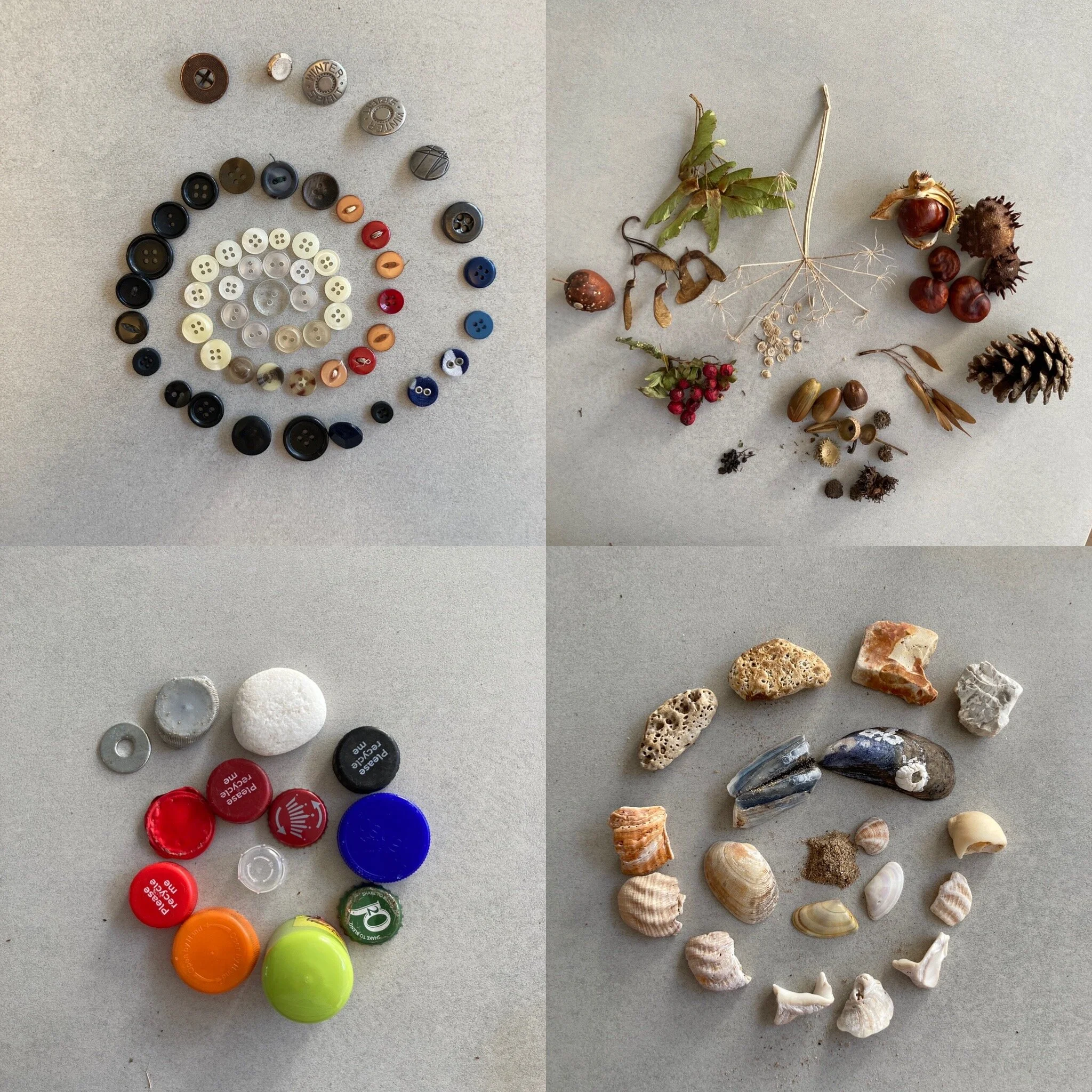A new beginning - with new learning
I began my Foundation Degree in Textiles Practice at Bradford College at the beginning of the month. We had an intensive four days in college - all safely managed with a combination of mask-wearing, cleansing of hands and workstations and socially distancing. It was great to meet up with a lovely group of women - many as nervous as I was about what we were setting out on - imposter syndrome was rife.
After an icebreaker, college admin and coping with Moodle, Teams AND Outlook (surely they could all be in one package?) we looked at the found objects we had brought in - taking photographs and trying to write a few lines of blank verse about each collection.
As we learned what we were going to be doing with these objects my collections were refined, to give more focus to what I might do with them. We have been asked to carry out observational studies of objects in each collection focusing line, shape, tone, and texture, and recording our observations in our sketch books.
We are using a variety of techniques, and this blog post tells the story so far. Writing this helps me reflect on what I have done and what I still need to do.
In class we were asked to take one of our objects as the subject of an observational drawing exercise. I chose a sea shell which has lovely textures. This was the first thing we were to draw in our lovely A3 sketchbooks - and as you will see, most of the time we were not supposed to be looking at the page! As you will also see, even when I was allowed to look at the object and the page I did not draw a good likeness.
I have tried to continue to draw most days - even if it is not representational drawing.
Much more to my liking was experimenting with mark making - using a variety of tools and media to see what happens. This reminded me some slow stitching I did in an introduction to the Stitchbook Project with Helen Birmingham, of Untangled Threads. There we were using different number os strands of embroidery thread to make our marks.
Over the weekend we also carried out a variety of other mark-making activities, including ‘drawing’ with masking tape, frottage (wax and graphite rubbings), monoprinting and sublimation printing. I have been working on some of these at home since, and will probably post more about them all in due course.
The process I have most enjoyed is monoprinting with a gelli plate. I am fascinated by the different effects that come from that process. I made a stencil by tracing a photograph of a snail and cut out the parts that were black in the photograph. The gelli plate was coated in black ink.
The first print was produced by laying white paper over the stencil. You will immediately notice my rookie error - the snail spirals the wrong way. The stencil should have been laid down ‘back to front’ so that the image printed correctly.
The second image was printed using the ink picked up by the back of the stencil; this one is the right way round!
The third and fourth prints shown here were made by laying paper on the gelli plate after the stencil was removed. By the time of the final print you can see that most of the ink had been removed where the gaps in the stencil occur. And these are also back to front.
A footnote to the misprinted snail is that although most garden snails spiral clockwise there are a few which , due to a genetic mutation, coil the other way, you may remember Jeremy, the lefty snail in the news few years ago.
So what next?
I have not really tackled anything from my bottle top collection, nor my coins, so I shall go back to those and do some observational drawing, using those drawings to determine which techniques would lend themselves to each of the collections.
I am expecting to do some collage, more masking tape drawing, as well as experimenting with mixed media.
Watch this space.















